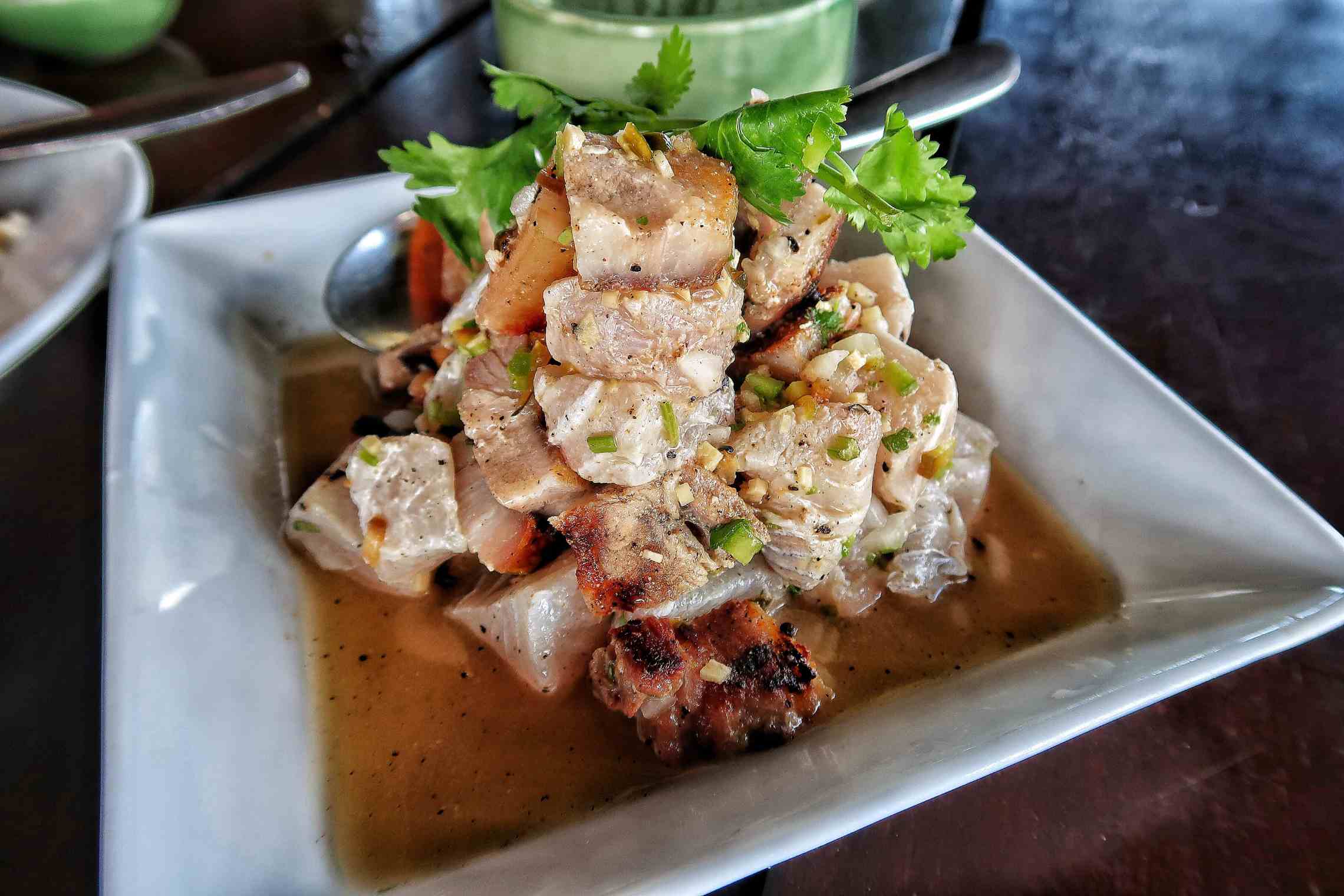
The History of the Philippine Ceviche.
Kinilaw has been a part of Filipino cuisine for over a century. While it’s not as old as ancient ceviche, it is the first citrus ceviche. Learn the kinilaw history and the citrus traveled around the world.
Kinilaw History, Origins & Comparisons to Ceviche
What is Kinilaw?
Kinilaw, meaning “eaten raw”, is a traditional Filipino dish consisting of cubed raw fish marinated in vinegar, citrus juice, and mixed condiments. The acids cook the fish but it is important to only mix it in before serving rather than soaking the fish in the liquid.
Origins of Kinilaw
Many assume that it was the Spanish who introduced ceviche to the Philippines, as Peru claims to have invented ceviche over 2,000 years ago.
Peru did in fact make ceviche, however, it was with fermented banana passionfruit. Peruvians used citrus fruits after the Spaniards brought them to Europe and South America from Southeast Asia, namely the Philippines.
Filipino ceviche using vinegar and citrus, kinilaw, actually predates the Spanish arrival.
Physical evidence was found in an excavation site dating back to the 10th century. Archaeologists discovered the remains of citrus fruits and fish bones that showed markings of cubed cutting.
When Spanish explorers arrived in the Philippines, natives were already eating this style of fish, then called kilaw, cqilao, or quilao. In later documents, Spaniards described the dish in journals and articles.
Today, kinilaw is still popular among locals and travelers. It is eaten as a shared appetizer or as a snack, called pulutan, which are dishes eaten with drinks.
Filipino Kinilaw vs. Peruvian Ceviche
Filipino kinilaw uses coconut vinegar, calamansi juice, garlic, onions, ginger, and chilies. The ingredients are mixed together just before serving so that the fish remains tender and partially raw.
Peruvian ceviches use purely citrus juices, onion, and chilies which soak the fish for at least a couple of hours. In the 1970s, Peruvian Japanese chefs served ceviche immediately after mixing in the fish.
Sign up for my newsletter on the sidebar for blog updates and my travel insider tips! And, check out my vlogs on YouTube!


